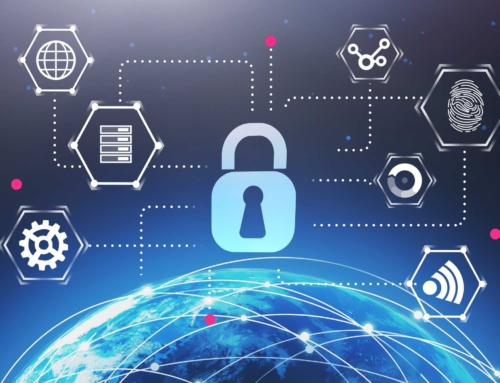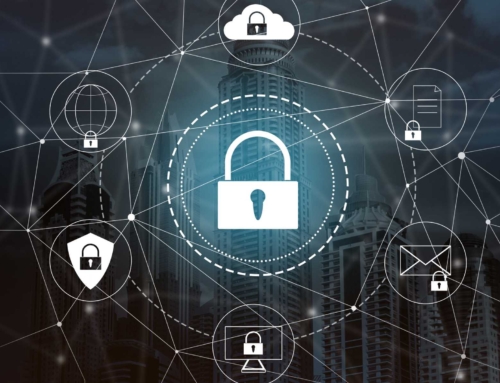Protecting Financial Institutions from Targeted Ransomware Attacks
The Rising Threat: Ransomware in the Financial Sector
Ransomware protection for financial institutions is no longer a luxury but a necessity in today’s digital age. As hackers become more adept at bypassing traditional security measures, the financial sector finds itself in the crosshairs of this malicious activity. We at Alvaka understand that the confidential data held by banks, credit unions, and other financial organizations make them prime targets for cybercriminals seeking to exploit vulnerabilities for financial gain. It is our mission to assist these institutions in fortifying their defenses against these increasingly sophisticated ransomware attacks.
Understanding the Need for Ransomware Protection for Financial Institutions
The requirement for robust ransomware defense mechanisms stems from the potential catastrophic impact of an attack on financial entities. The implications of such breaches not only have severe financial consequences but can also erode customer trust and tarnish reputations built over years. At Alvaka, we recognize the critical necessity of protecting sensitive information and maintaining uninterrupted financial operations. Our approach prioritizes continuous risk assessment and swift adaptability to evolving cyber threats, ensuring that our clients remain guarded against the scourge of ransomware.
Establishing a Robust Defense Strategy Against Cyber Extortion
Developing a resilient defense strategy requires a multifaceted approach, combining advanced technology with stringent policy enforcement. Our team of experts facilitates this by conducting thorough risk analyses and crafting bespoke protective measures tailored to the unique needs of each client. By intertwining cutting-edge network services with a culture of cybersecurity awareness, we empower financial institutions to not only defend against ransomware threats but also to rapidly recover in the unfortunate event of a breach, minimizing downtime and financial loss.
Identifying Vulnerabilities in Financial Infrastructure
Analyzing the Current State for Enhanced Ransomware Protection for Financial Institutions
We recognize that identifying vulnerabilities within the financial infrastructure is fundamental to bolstering ransomware protection for financial institutions. Our team conducts thorough assessments to pinpoint weak spots, ranging from outdated software to inadequate access controls. Consequently, we zero in on these vulnerabilities, ensuring that protocols are updated, thus diminishing the risk of a breach.
Employee Awareness and Training
Through experience, we understand that cyber threats often exploit human error. Therefore, we emphasize the need for comprehensive employee training programs. Our approach ensures that every member of your organization is equipped with the knowledge to recognize and correctly respond to potential ransomware threats. Moreover, by cultivating a culture of cybersecurity awareness, we help minimize the risk of accidental breaches from within.
Implementing Advanced Network Services for Enhanced Security
Employing Cutting-Edge Tools and Resources
Optimization of network security is critical for our clients. We leverage cutting-edge tools and resources to strengthen the defense against ransomware attacks. Our advanced network services include real-time monitoring, intrusion detection systems, and robust firewalls. Additionally, we deploy end-to-end encryption for sensitive financial data to prevent unauthorized access, ensuring only authorized personnel have access to critical systems.
Customized Security Protocols
We believe in a tailored approach to ransomware protection for financial institutions. Every financial entity has unique needs, and therefore, requires customized security protocols. Our expertise allows us to craft precise solutions that align with your institution’s size, scope, and the particular risks it faces. This bespoke strategy ensures a level of protection that generic solutions simply cannot match.
Best Practices in IT Management for Preventing Ransomware Attacks
Regular Software Updates and Patch Management
One of the keystones of effective IT management in preventing ransomware is rigorous attention to software updates and patch management. We ensure that all systems are up to date with the latest patches, which often include critical security improvements to thwart emerging threats. Maintaining current software versions across all devices forms a vital barrier against ransomware infiltrations.
- Continuously monitor for software updates and vulnerabilities.
- Implement management protocols for timely patch application.
- Review and test updates in controlled environments before deployment.
Developing a Comprehensive Backup Strategy
Maintaining an effective backup strategy is essential in safeguarding against potential data loss during a ransomware attack. We advocate a multi-layered backup approach, ensuring that data is stored in multiple, secure locations. Furthermore, we conduct regular backup tests to guarantee a swift and efficient recovery process. This redundancy is pivotal in restoring operations without yielding to ransom demands.
Proactive Incident Response Planning
Beyond prevention, we prepare for the worst-case scenario with a proactive incident response plan. Our teams are equipped to respond swiftly to any indication of a ransomware attack, minimizing potential damage and downtime. An organized and practiced response limits the impact on your institution, making a significant difference in the outcome of such an event.
Did you know that ransomware attacks on financial institutions often exploit outdated systems? Regularly updating cybersecurity protocols is crucial for protection.
Continuous Vigilance: The Key to Ransomware Protection
In an era where digital threats are evolving with unprecedented speed, we understand that ransomware protection for financial institutions is not just a one-time setup but a continuous process. At Alvaka, we advocate for unyielding vigilance that underpins every layer of your security strategy. It’s about creating an ecosystem that doesn’t just defend against attacks but also anticipates and neutralizes threats before they mature. Our proactive monitoring and incident response teams work round-the-clock to ensure that any hint of ransomware is swiftly addressed, minimizing potential downtime and safeguarding your institution’s reputation.
Building a Resilient Financial Institution with Advanced IT Solutions
The resilience of a financial institution lies in its ability to adapt and respond to cyber threats. By integrating advanced IT solutions with daily operations, we bolster your defense mechanisms against cyber extortion. Our team designs and deploys cutting-edge security systems that not only meet current industry standards but also set new benchmarks for ransomware protection. Our services extend beyond static defenses, as we employ dynamic, intelligent systems that learn from interactions, continuously enhancing their protective capabilities to secure your valued assets and customer data against any form of cyber attack.
The Future of Cybersecurity in Finance: Staying Ahead of Ransomware Threats
As the digital landscape reshapes, the future of cybersecurity in finance hinges on staying a step ahead. Ransomware threats are not static; they evolve, and so do our methods of defense. Alvaka’s commitment to innovation ensures that our clients receive the most current and effective ransomware protection for financial institutions. We believe in empowering our clients with knowledge and tools, such as regular cybersecurity training for staff and clear protocols for swift ransomware recovery, which are paramount in maintaining a secure environment. Together, we can look towards a future where financial services operate with assurance, integrity, and trust, without the shadow of cyber threats looming overhead.
FAQ
What are the main vulnerabilities in the financial sector’s infrastructure? ▼
Our financial infrastructure can have various vulnerabilities, including outdated systems, unpatched software, weak authentication processes, and insufficient employee cybersecurity training. Recognizing these weaknesses, we regularly update our systems, enforce strong authentication, and prioritize ongoing cybersecurity education to mitigate these risks.
How does Alvaka protect financial institutions against ransomware? ▼
We implement advanced network services, such as intrusion detection systems, firewall management, and network segmentation. Additionally, our robust incident response plans ensure quick action in the event of an attack, thereby enhancing an institution’s security posture.
What are the best practices in IT management to prevent ransomware attacks? ▼
Best practices include regular software updates and patch management, employee training on cybersecurity awareness, robust network security protocols, two-factor authentication, and comprehensive backup and disaster recovery strategies. These practices are vital components of our preventive approach to securing clients’ systems.
Can regular data backups protect against the consequences of a ransomware attack? ▼
Yes, maintaining regular, secure backups is critical because it enables financial institutions to restore data without paying a ransom. Our backup solutions are designed to be resilient against cyber threats, ensuring that organizations can quickly recover from an attack.
How frequently should financial institutions conduct security audits? ▼
We recommend that financial institutions conduct comprehensive security audits at least annually or whenever there are significant changes to their IT environment or emerging threats. Moreover, continuous monitoring can detect potential threats before they escalate into serious breaches.
Why is employee training important for ransomware protection? ▼
Educating employees is a cornerstone of ransomware defense, as human error often leads to successful attacks. Our cybersecurity awareness programs train personnel to recognize and respond appropriately to potential threats, significantly reducing the institution’s risk profile.
What role does incident response planning play in combating ransomware? ▼
An effective incident response plan is critical for rapidly detecting, containing, and eradicating cyber threats, thereby minimizing damage. We help institutions create and rehearse such plans, ensuring they are prepared to respond to cyber incidents effectively.
How does network segmentation help prevent the spread of ransomware? ▼
Network segmentation divides a network into separate segments, limiting the spread of ransomware by isolating outbreaks to single points rather than allowing them to move laterally across the entire network. We design segmentation strategies to enhance our clients’ security architecture.
Is two-factor authentication (2FA) necessary for financial institutions? ▼
Two-factor authentication is a critical layer of security that requires users to provide two different authentication factors to verify themselves. This practice prevents unauthorized access, and we highly recommend its implementation, as it adds an essential barrier against unauthorized access, making unauthorized data breaches much more challenging.
How will cybersecurity in the financial sector evolve to tackle future ransomware threats? ▼
Cybersecurity in the financial sector will continually evolve through advancements in AI, machine learning, and predictive analytics to mitigate ransomware threats. Additionally, we maintain a proactive stance, staying ahead of trends and threats, to ensure the security measures we deploy for our clients are cutting-edge and effective.








 Smoke testing is a term used to describe the testing process for servers after patches are applied.
Smoke testing is a term used to describe the testing process for servers after patches are applied.  This is a basic cost calculator for you to compute your typical monthly cost for patching your servers, PCs, laptops, tablets and associated application software. It also forms the basis for you to begin calculating your Return on Investment for software patching, or for comparison with alternatives to the manual process of patching operating systems and application software—such as Patch Management as a Service, also known as Vulnerability Management as a Service.
This is a basic cost calculator for you to compute your typical monthly cost for patching your servers, PCs, laptops, tablets and associated application software. It also forms the basis for you to begin calculating your Return on Investment for software patching, or for comparison with alternatives to the manual process of patching operating systems and application software—such as Patch Management as a Service, also known as Vulnerability Management as a Service.